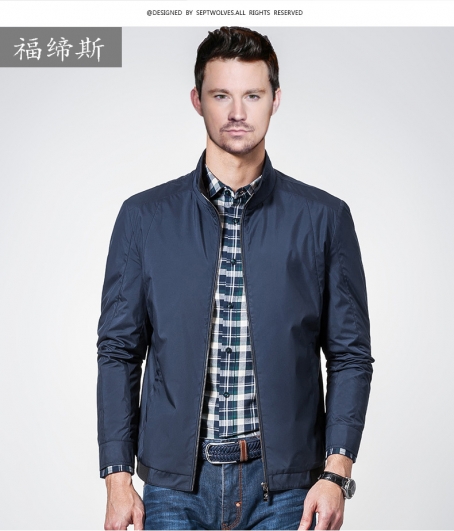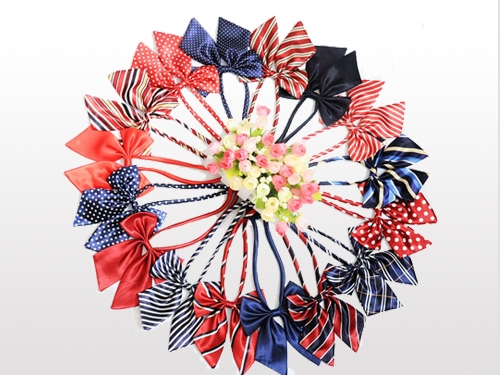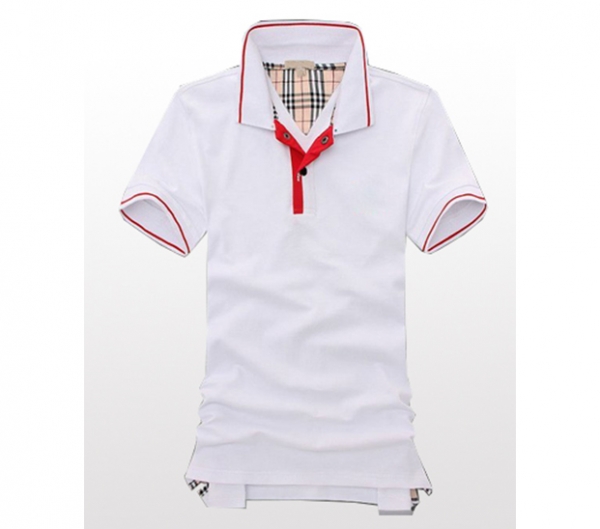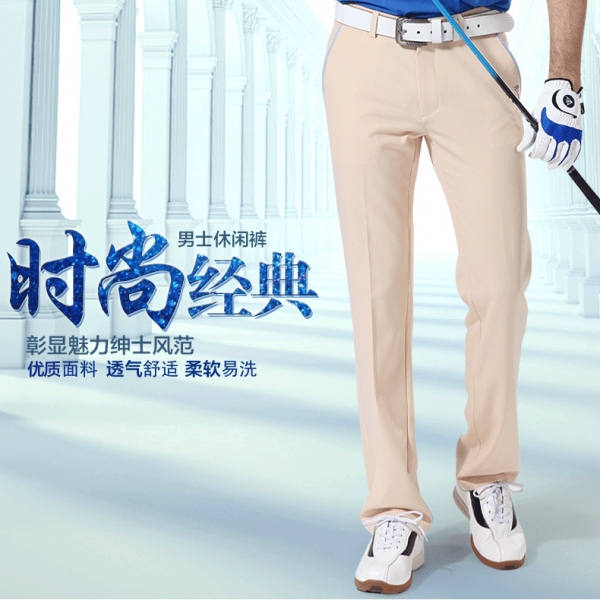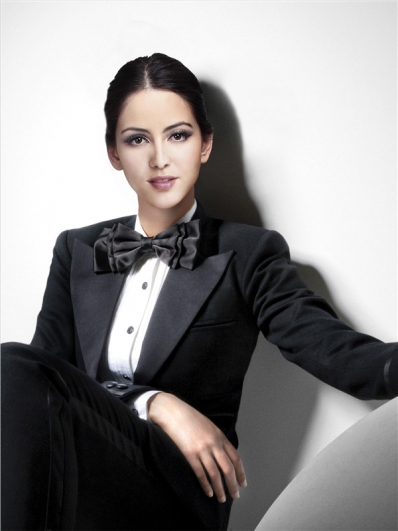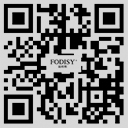There are several kinds of printing, the more common types are as follows:
1) Transfer printing
(English: Tropical Print) the pigment is printed on the paper by printing method, and then the color is transferred to the fabric by high temperature (heating and pressing on the back of the paper). It is generally used for chemical fiber fabrics. It is characterized by bright color, delicate layers, realistic pattern and strong technical performance. However, the process is only applicable to a few synthetic fibers such as polyester.
Transfer printing process is simple, small investment, flexible production, currently more popular in the market... But to be honest, this transfer printing and other types of printing comparison, the price is a bit high, but there is a certain level
2) . discharge printing
Discharge printing uses a dye that is not resistant to discharge agent to dye the ground color. After drying, it is printed with a paste containing discharge agent or both. During post-treatment, the ground color dye at the printing site is destroyed and the color is eliminated, forming white patterns on the color ground or color patterns formed by dyeing with the color dyes. Also known as white or color pull. It can make the effect as if the clothes have been washed with water? The color of clothes seems to have been washed out a lot, mottled ~ ~ in fact, this is a kind of blotting. The principle of blotting is to pull out the color of the fabric and make it into another lighter color, which is better than the washing effect. It is a kind of cool printing for men's wear!
3). Reduction printing
The process takes advantage of the difference of chemical corrosion resistance of different fibers in interwoven or blended fabrics. One of the fibers is removed locally by printing with a burning agent, and other fibers are retained to form a translucent pattern. It is also called burnt out printing or burnt out printing.
4) Shrink printing
In this paper, the chemicals which can cause the fiber to expand or contract are applied to the fabric by printing method. Through proper treatment, the difference of expansion or contraction between the printed part and the non printing part fiber can be produced, so as to obtain the product with regular concave convex pattern on the surface. For example, pure cotton printed seersucker with caustic soda as expanding agent. Also called bump printing.
5) Screen printing
The printing mould is a polyester or nylon screen (pattern plate) which is fixed on the square frame and has hollow pattern. The pattern on the pattern can pass through the color paste, and the area without pattern is sealed with polymer film. During printing, the pattern plate presses the fabric tightly, and the paste is filled on the pattern plate, and then scraped repeatedly with a scraper to make the paste reach the surface of the fabric through the pattern. Flat screen printing has low production efficiency, wide adaptability and flexible application, which is suitable for small batch and multi variety production.
6) Rotary screen printing
The printing mould is a cylindrical nickel screen with hollow pattern, which is installed above the rubber guide belt in a certain order and can rotate synchronously with the guide belt. During printing, the color paste is input into the screen and stored at the bottom of the screen. When the round screen rotates with the guide belt, the scraper pressing on the bottom of the screen and the flower net have relative scraping pressure, and the color paste reaches the fabric surface through the pattern on the screen.
Rotary screen printing is a continuous process with high production efficiency. It has the advantages of roller and flat screen printing, but it has some limitations in the fineness of pattern and the color of printing. Remember: rotary screen printing in the color selection is a certain limitation
7) Pigment printing
Pigment printing is also called pigment printing. Because pigment is a kind of water-insoluble coloring material, it has no affinity to fiber, and its coloring must be realized by coating the film-forming polymer (adhesive) and adhesion to the fiber. Pigment printing can be used in the processing of any fiber textiles, and has more advantages in printing blended fabrics and interwoven fabrics. It has the advantages of simple process, wide spectrum, clear flower outline, poor handle and poor rubbing fastness.
8) Paste printing
The so-called water slurry is a kind of water-based sizing material, which is suitable for printing on light colored fabrics. It belongs to a wide range of printing types. But it also has an advantage, because it will not affect the original texture of the fabric, so it is more suitable for large-area printing patterns. It has soft handle and bright color ~ ~ but there is a big disadvantage of water slurry. The color of water slurry is lighter than that of cloth ~ ~ if the color of cloth is darker, the water slurry can not cover it.
9) Latex printing
The emergence and wide application of glue after water slurry, because of its very good coverage, so that dark clothes can also be printed with any light color, and has a certain gloss and three-dimensional sense, so that the ready-made clothes look more high-end, so it has been rapidly popularized, almost every printing T will use it. However, due to its hardness, it is not suitable for large-scale field patterns. For large-area patterns, it is better to print them with water slurry and then decorate them with glue. This can not only solve the problem of large-area glue hardness, but also highlight the sense of hierarchy of patterns; There is also a way to steal large-area field patterns to make a rotten effect, but always wear a little hard, so it is better to combine water and glue to solve the problem of large-area printing. It has smooth and matte surface, soft, thin and environmentally friendly, and can be stretched.
10) Ink printing
At first glance, ink is not very different from glue. However, when the glue is printed on smooth fabrics such as windbreaker, the color fastness is very poor. If you scrape it with your fingernails, you can scrape it off. But ink can overcome this shortcoming. Therefore, when making windbreaker, it is usually printed with ink. Its features are bright color and vivid image. A wave of head print has arisen in the market some time ago. Do you know if you pay attention to it? Generally speaking, only ink printing can print that effect. Sometimes, you can sprinkle some gold and silver powder on the ink, which makes the decoration effect better.
Rubber planting: the glue is to be molded, pressed, not printed. Flocking: soft handle, bright color, but washing will drop, if you want to wash, first add fixing agent. Foaming: printing on paper or fabric by screen printing with microsphere foaming ink and heating to obtain raised graphics and text or blind reading materials. Gel paste: it's no different from jelly. It's sticky and sticky, and it's easy to get on the fabric's ash! Bronzing: a transparent glue is printed on the surface and pressed with gold foil or other colored foil paper at high temperature. If the factory's power is not enough, it may affect the washing! Suede pulp: it's a kind of pulp, which can do what flocking can't do, such as small details! The effect is more delicate than flocking But it doesn't feel as good as flocking!


